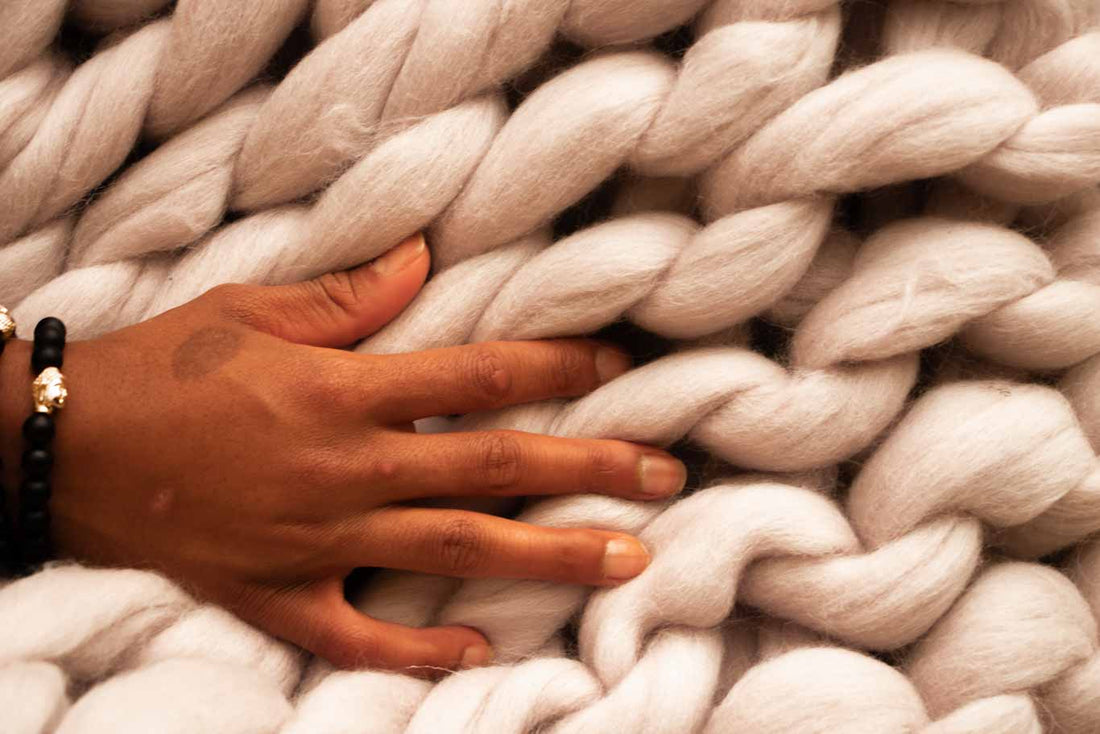
How to Wash a Wool Blanket
Josie SivignyWhen it comes to how to wash a wool blanket, it can seem like a high maintenance product, but you just need the right tools and a little prep.
Nothing beats snuggling up with a heavy wool blanket during the cool winter months. Not only do wool blankets provide extra warmth thanks to their thick fibers, but they’re also durable enough to last a lifetime, as long as you treat them right. Ever wondered how your grandmother kept all her throws smelling so nice? Us too. That’s why we created the ultimate guide to caring for your wool blanket—including tips on brushing, spot cleaning, and washing your throw without shrinking it or damaging its natural fibers.
What you will Need to Wash a Wool Blanket
First things first. If you want to wash your wool blanket you’re going to need a few different supplies. Starting with…
- A wool brush–this will come in handy for everyday care, as well as for bigger messes.
- Wool detergent or club soda–think of wool like your skin. You wouldn’t use just any old body wash on your face, and the same goes for your sensitive blanket. Gentle detergent is a must-have for wool.
- A cloth–for blotting, scrubbing doesn’t work with wool.
- A washing machine with a “delicate setting” or a big basin to soak your blanket in–again, wool is sensitive
- A towel–for soaking up extra moisture
- A drying rack or clothesline–wool is strictly hang dry only!

How to Wash a Wool Blanket
Basic Maintenance:
If you’re taking your wool blanket out of storage for the first time this season, or simply want to freshen up your go to, there are a few things you can do to clean your blanket without actually washing your wool. Worried about dust? Brushing your wool blanket can help. Simply lay the throw flat, look for the long axis, and brush the fibers in the same direction. This will soften the wool fibers and loosen up any particles caught up in the wool. Once you’re finished, you can air out the blanket on a clothing line, or fluff it up in the drier using cool air for two minutes.
Small Spills:
Don’t panic if you spill a little tea on your new wool blanket. Not only are wool fibers naturally repellent, but stains take a while to set in. If you have an accident simply grab the nearest towel and blot, don’t rub, the spill. If any residue soaks in, simply use a towel soaked in club soda (again blot, don’t rub) to ease the stain out. You can also use warm water and mild detergent for more serious spills.
The Wash Wash:
If you live with dogs or you’ve inherited your uncle’s old Pendleton, it might be time for a real wash. This might mean dropping your blanket off at the dry cleaner, throwing it your fancy machine washer on delicate, or adjusting your basic washer settings to create DIY a gentle cycle. If you’re in the latter camp, grab your gentle wool detergent, set your washer to cold, and let it fill up before soaking your blanket for 15 minutes (without spinning). You can then wash the blanket on a low setting for two minutes before switching over to the rinse cycle. Think of it like handwashing—but easier.
Once you’re finished with the delicate cycle (or your delicate DIY) you can hang dry your blanket on a rack inside or outside. But be careful to avoid direct sunlight. Excess heat can cause your wool fibers to shrink, even in the sun!
How to Care for Wool Blankets
Wool blankets can last a lifetime, as long as you treat them right. Keep your wool out of direct sun in order to maintain its color (wool fades easily), and make sure to store your wool blankets properly during the off-season. This means brushing them out (or washing them) before sealing them in a plastic container or wooden trunk. If you’re worried about moths, cedar chips make for excellent bug repellent and aren’t foul smelling like your standard mothball.
Looking for a new blanket? Check out our cotton throw. It’s cozy, easy to wash, and comes in two beautiful, universal colors: fog, a light gray, and indigo, a classic blue.



